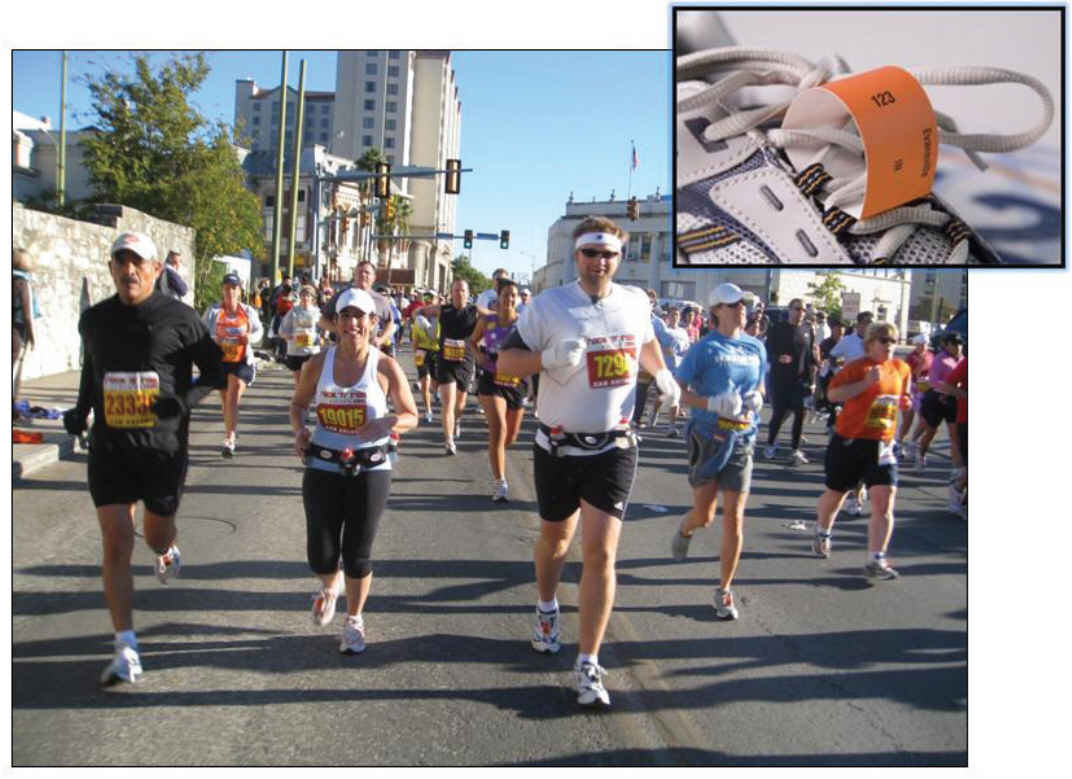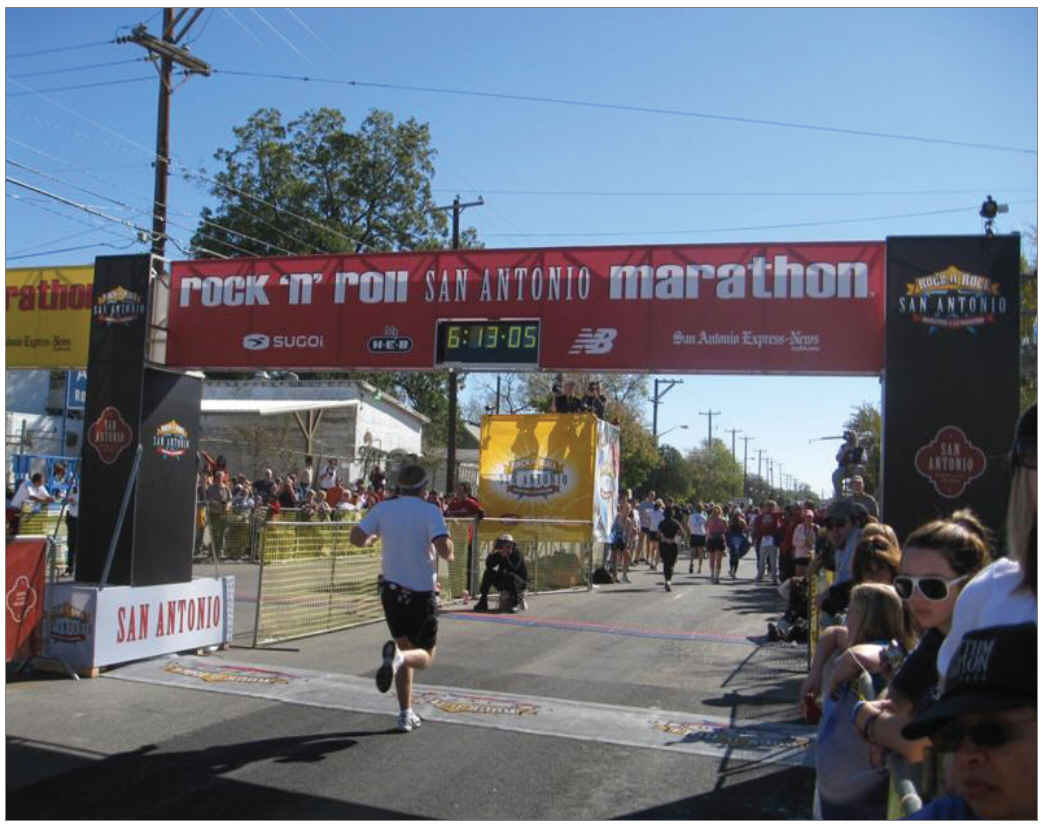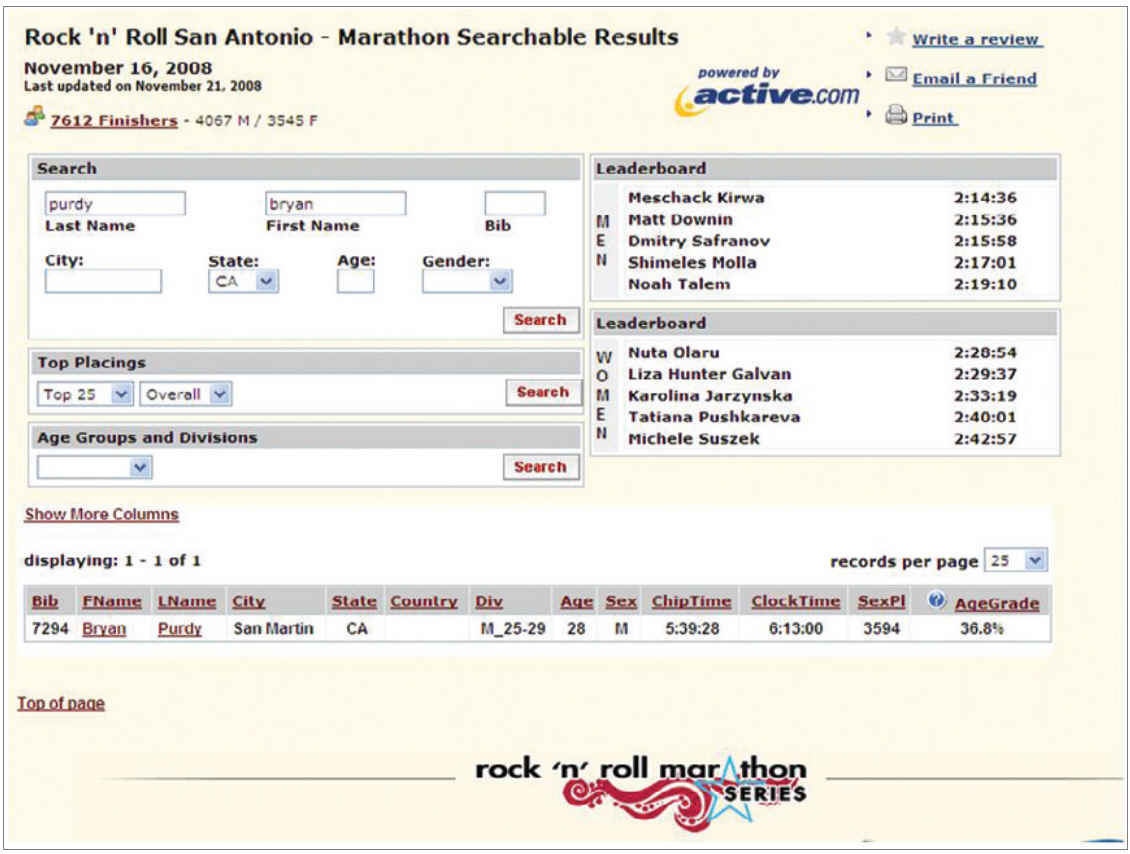
By J. Gerry Purdy, Ph.D.
A DAUNTING TASK
I have fortunately (or unfortunately depending on your point of view) run three marathons in my life with the best one being the Los Angeles Western Hemisphere Marathon on Dec. 10, 1967 when I ran 3:23:00 or about 7:45 min per mile for 26 miles. Keeping track of the few thousand crazy runners that day was a nightmare. The race organizers had a long ¡®shoot¡¯ at the end of the race to hold hundreds of runners in their order of finish. Volunteers would tear off a small strip on their race number which included a duplication of the runner¡¯s race ID. The volunteers used a long string with a thick needle to thread each runner¡¯s small ID number through a small hole. That allowed them to capture the order of the finish of (almost) everyone.
Recording the time was much more challenging. It was impossible to have volunteers (even if a lot of them) record the time of every runner: they were simply too many runners finishing at one time. Race organizers would, instead, record a runner¡¯s time every 5-10 seconds and write down the runner¡¯s number next to their time. Then, the race officials would sit down and go through the long string of runner ID tags and interpolate times for all the runners based on the ones in which they had recorded a time. It took many hours and the whole process was subject to error. That was 1967.

Photo 1. Claudia (19015) and Bryan (7294) in the San Antonio Rock ¡®n¡¯ Roll Marathon - note orange RFID on runners¡¯ shoes. (Photo by Frost & Sullivan)
RFID TO THE RESCUE
My wife Alicia and I flew to San Antonio on Nov. 15, 2008 to watch my son Bryan and his significant other Claudia run in (and complete) the San Antonio Rock ¡®n¡¯ Roll Marathon.
Each runner in all major road races today is given a number (just as always) plus a special tag that has an RFID chip embedded in it, most typically attached to the laces in the runner¡¯s shoe. Take a look at Photo 1. You can see the bright orange tags on the shoes of all the runners. Note the insert in the photo of what the tag looks like close up. The tag includes a small antenna that can be read by readers placed along the course.
The San Antonio race organizers used an RFID system supplied by ChonoTrack Systems.
They set up RFID readers at intervals along the San Antonio Rock ¡®n¡¯ Roll course. The readers (shown in Photo 2 underneath the mat that lies across the finish line) enabled recording the individual splits for every runner throughout the entire course. Runners were grouped according to projected finish time in ¡®corrals¡¯ of 1,000 people each. The race officially started for the elite runners at 7:30 am which meant many of the volunteers had to be there at 5 am. Each corral started at intervals of around 90 seconds.
But, since there was an RFID reader at the starting line, the system was able to determine the actual start time for each of the thousands of runners.
A total of 7,612 of the 30,000 entrants finished the marathon while 17,110 finished the half marathon. That means around 5,000 people either didn¡¯t start or didn¡¯t finish. Or, perhaps some didn¡¯t put the RFID chip on their shoe. It¡¯s still an amazing logistical challenge putting on one of these races. After the race is over, the results are posted online including the splits. I¡¯ve shown a screen shot of the results for my son.

Photo 2. Finish Line - San Antonio Rock ¡®n¡¯ Roll Marathon. Note: Pad on street - reads tags & system records time. Also note: Time on clock is fromm start - runner time is from tag (Photo by Frost & Sullivan)
SMART RUNNING
The marathon was organized by Elite Racing of San Diego.
The firm produced the Carlsbad 5000 for many years and then 10 years ago began the San Diego Rock ¡®n¡¯ Roll Marathon which put a festival atmosphere around the marathon including 70+ bands playing along the course, a health and fitness expo and a destination trip for thousands of people.
Elite Running has expanded their franchise into a number of other cities including Phoenix, Philadelphia, San Jose, Virginia Beach and their popular Country Music Marathon in Nashville.
Elite provides incentives for runners to complete in their entire series of Rock ¡®n¡¯ Roll events.
Race organizers now have a number of different running RFID solution system suppliers to consider such as Race Time (Northern Illinois), Road ID (Erlanger, KY) ChronoTrack Systems (Evansville, IN) and IPICO Sports (Peoria, IL) and Innovative Timing Solutions (Chesterfield, MO). And, this solution is applied to a number of outdoor sporting events including cycling, auto racing and any event that requires keeping track of time for lots of entrants.

Rock ¡®n¡¯ Roll San Antonio - Marathon searchable results (Source: Frost & Sullivan)
Sure, RFID is used to track inventory in warehouses and many other inventory management problems, but it¡¯s exciting to see that one of the worst headaches around -- managing the results in a large running event like the marathon -- has finally found a mobile RFID solution that is good for the runners as well as the organizers.
I commend all those thousands of people who trained for many months and then were able to experience the joy and personal sense of accomplishment of completing a major physical challenge like this in their life.
J. Gerry Purdy, Ph.D., is VP & Chief Analyst, Mobile & Wireless, Frost & Sullivan (www.frost.com).
For more information, please send your e-mails to swm@infothe.com.
¨Ï2007 www.SecurityWorldMag.com. All rights reserved. |



